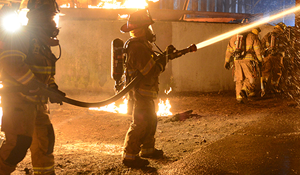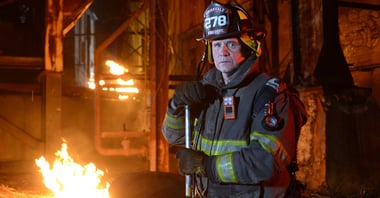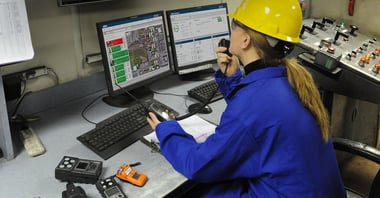 La gamme de détecteurs de gaz Tango TX se dote de deux nouvelles cellules : le cyanure d'hydrogène (HCN) et l'ammoniac (NH3). Auparavant, ces cellules n'étaient disponibles qu'avec le détecteur monogaz Gasbadge Pro et avec les détecteurs multigaz Ventis Pro5 et MX6 iBrid.
La gamme de détecteurs de gaz Tango TX se dote de deux nouvelles cellules : le cyanure d'hydrogène (HCN) et l'ammoniac (NH3). Auparavant, ces cellules n'étaient disponibles qu'avec le détecteur monogaz Gasbadge Pro et avec les détecteurs multigaz Ventis Pro5 et MX6 iBrid.
Si elles sont configurées dans le Tango TX1, ces nouvelles cellules peuvent être utilisées avec la technologie DualSense, qui accroît la sécurité des travailleurs et élimine le risque de défaillance des cellules. Le Tango TX2 peut, quant à lui, servir de détecteur monogaz avec une seule cellule ou de détecteur deux gaz avec les cellules de la gamme.
HCN en action
Le HCN est hautement toxique car il interfère avec la capacité du corps à utiliser l'oxygène au niveau cellulaire. Le HCN est encore utilisé dans une multitude de processus, notamment la fumigation, la galvanoplastie, l'exploitation minière, la synthèse chimique et la production de fibres synthétiques, de plastiques, de colorants et de pesticides. Le gaz peut également être libéré lors de réactions entre le cyanure et l'acide, lors d'incendies de nitrile ou lors de la combustion.
Le NH3 en action
Le NH3 est également très toxique en raison de sa nature irritante et corrosive. Il est utilisé dans toute une série d'industries en raison de ses propriétés chimiques polyvalentes, notamment dans l'agriculture en tant qu'engrais, dans la fabrication de produits chimiques pour synthétiser d'autres composés et dans les systèmes de réfrigération industrielle. Il joue également un rôle dans les produits pharmaceutiques, les textiles, le traitement de l'eau, l'exploitation minière, la métallurgie, les produits d'entretien ménager, la production de pâte à papier et de papier, la fabrication de caoutchouc et de plastique et certaines applications agroalimentaires.
De nouvelles possibilités pour la série Tango

L'ajout du HCN et du NH3 ouvre une vingtaine de nouvelles possibilités pour les détecteurs de gaz Tango TX dans de nombreuses industries et applications.
Dans certains cas, les utilisateurs pourront réduire de moitié leur parc de détecteurs de gaz en combinant deux cellules différentes dans un seul détecteur. Cela permettra également à d'autres secteurs d'activité de réduire leur parc de détecteurs en les remplaçant par des appareils plus petits, qui n'auront pas besoin d'être rechargés après chaque utilisation.
Dans le secteur des incendies, par exemple, le Tango TX2 est un excellent moyen pour les pompiers de rester protégés contre le CO et le HCN pendant les révisions. Pendant la récupération et le nettoyage, les premiers intervenants doivent vérifier l'air avant de retirer leurs masques pour s'assurer qu'il n'y a pas de présence des fameux « jumeaux toxiques ».
Les mineurs, quant à eux, peuvent découvrir de nouvelles utilisations du Tango TX2. Les résidus, qui sont des eaux usées riches en cyanure, sont collectés et conservés dans des sacs secs. En se biodégradant, le cyanure libère du NH3. Ces mêmes résidus, riches en HCN et en NH3, sont également utilisés comme pâte cimentée pour solidifier les tunnels dans les mines souterraines après les explosions.
Dans les fermes laitières, la série Tango TX peut être utilisée pour détecter le NH3, qui est produit par la forte présence d'urine qui, lorsqu'elle est décomposée par des bactéries, libère le gaz et peut provoquer des irritations respiratoires et des problèmes environnementaux. D'autres risques sur site, tels que le gaz H2S libéré par le fumier, peuvent également être surveillés.
Pour en savoir plus sur ces nouvelles options de cellules, cliquez ici pour parler à un expert.



